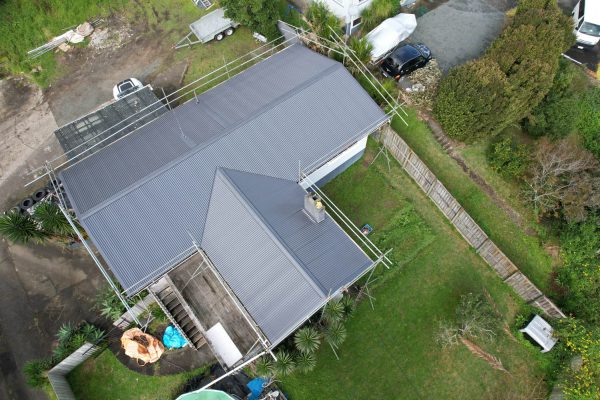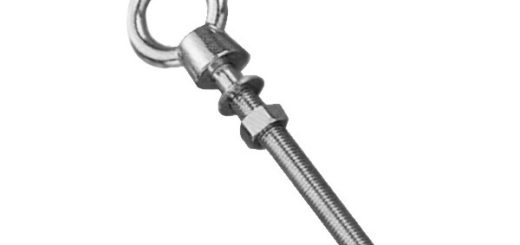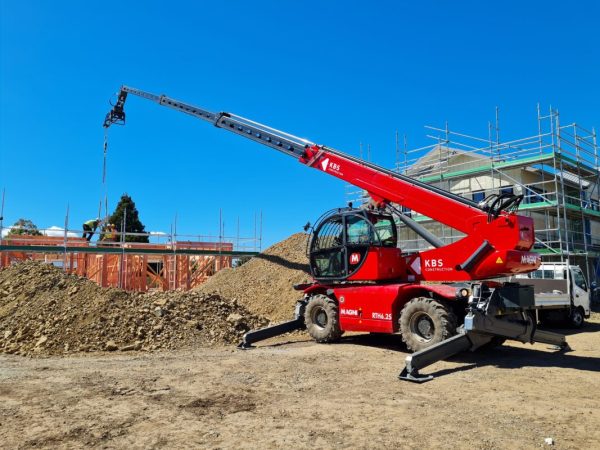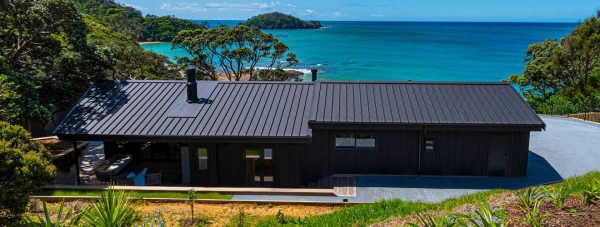Choosing the Right Roofing: Factors to Consider

The roof is a critical component of any home, serving not only as a barrier against the weather but also contributing significantly to the overall energy efficiency and aesthetic appeal. The selection of roofing material is thus a decision of paramount importance. This guide intends to provide a comprehensive analysis of key factors that homeowners should consider when choosing the ideal roofing material.
With the multitude of options available on the market, the decision-making process may seem overwhelming. This guide aims to alleviate this challenge by offering a systematic approach to evaluate each factor. From understanding the functional role of a roof to exploring the benefits and drawbacks of various materials, considering the influence of local climate and cost, and assessing aesthetic implications and energy efficiency, this guide aims to equip readers with the necessary knowledge to make an informed choice.
The Role of a Roof
A roof performs several key functions that extend far beyond mere protection against the elements. It’s important to understand these roles as they directly influence the choice of roofing material.
Protection
At its most basic, a roof serves as the first line of defense against various weather conditions, from scorching heat and heavy rain to wind and snow. A roof’s ability to withstand these elements over a long period determines its durability and longevity.
Insulation and Energy Efficiency
A well-designed roof acts as an effective insulator, helping to maintain a comfortable temperature inside the home. It prevents the loss of heat in winter and shields the interior from excessive heat in summer. Consequently, the energy efficiency of your home is heavily influenced by your choice of roofing material.
Aesthetic Appeal
The roof contributes significantly to the overall appearance and style of a home. As one of the most visible parts of a home’s exterior, the roof’s colour, texture, and material should complement the architectural style. Hence, aesthetics plays a crucial role in choosing the right roofing.
Value and Resale Potential
Finally, a quality roof can increase the value of a home. Prospective home buyers often view the condition of the roof as a reflection of the overall maintenance of the home. A roof in good condition can thus significantly enhance the resale potential of your property.
Understanding these roles is the first step towards making an informed choice about the ideal roofing for your home. The subsequent sections will delve into the specifics of various roofing materials and other influencing factors.
Material Choices
The selection of the right roofing material is influenced by multiple factors, including the roof’s function, local climate, cost, and aesthetic preference. Here, we provide an overview of the most common roofing materials, their advantages, and potential drawbacks.
Corrugated Iron
A traditional choice in many homes, corrugated iron is valued for its durability and resilience to diverse weather conditions. It offers a straightforward installation process, but it can be noisy during heavy rain and, without proper insulation, may contribute to heat loss.
Concrete and Clay Tiles
Opting for concrete or clay tiles can provide your home with a timeless, classic appeal. Highly durable and long-lasting, these tiles can be more expensive and require a robust structure for support due to their weight.
Long Run Metal Roofing
Lightweight and versatile, long-run metal roofing is often made from materials such as Colorsteel or Zincalume. Known for its strength and variety of color options, it provides a modern look to homes. However, like corrugated iron, it can also be noisy during rain.
Asphalt Shingles
While not as common in some regions, asphalt shingles are sometimes used for their relatively low cost and ease of installation. They come in various colors but may not be as durable as other options, especially in extreme weather conditions.
Butynol or Rubber Roofing
Ideal for flat roofs or roofs with a very low pitch, this type of roofing is popular in modern, architecturally designed homes. It is highly waterproof but requires professional installation to ensure its effectiveness and longevity.
Metal Tiles
For those who prefer the look of traditional tile roofing but want less weight and often increased durability, metal tiles can be a good choice. They come in a variety of styles and finishes.
In the next sections, we’ll discuss how the local climate and cost considerations can influence the choice of these roofing materials, how to ensure aesthetic coherence with your home’s architectural style, and how different materials can impact your home’s energy efficiency.
Climate Considerations
When choosing the right roofing material, it’s essential to consider the local climate and the specific weather conditions your roof will need to withstand. In a region like Whangarei, this typically means understanding how different materials fare under sunlight, rainfall, and wind.
Resistance to Sun Exposure
In regions with significant sun exposure, choosing a roofing material that can withstand UV radiation is crucial. Concrete tiles and metal roofing, including corrugated iron and long-run metal roofing, are excellent choices as they have good UV resistance, preserving their structural integrity and appearance over time.
Rain and Wind Resistance
Roofing materials also need to offer superior waterproofing and wind resistance, especially in areas that experience frequent rainfall or high winds. Corrugated iron, long-run metal roofing, and Butynol have demonstrated resilience under such conditions.
Thermal Efficiency
For regions with considerable temperature variations, it’s beneficial to choose roofing materials that help maintain a comfortable indoor temperature. Concrete tiles and insulated metal roofs can effectively regulate indoor temperatures by reducing heat transfer.
It’s always advisable to consult with a professional roofer or a builder about these climate considerations to ensure your chosen roofing material is suitable for Whangarei’s subtropical climate. In the next section, we’ll delve into cost considerations when choosing the right roofing material.
Cost Considerations
Cost is undeniably a significant factor in deciding on a roofing material. However, it’s crucial to consider both the initial outlay and the long-term costs associated with maintenance and potential lifespan.
Initial Cost
The initial cost of roofing materials can vary greatly. For example, corrugated iron and long-run metal roofing are often less expensive to purchase and install than concrete or clay tiles. Asphalt shingles are usually among the least expensive options, but their use is less common in New Zealand.
Longevity and Maintenance Costs
While some materials may be cheaper initially, their long-term maintenance costs and expected lifespan can affect their overall cost-effectiveness. Metal roofing options and concrete tiles are known for their durability and typically require less maintenance, potentially saving homeowners significant costs over time.
Energy Efficiency
Consideration should also be given to the energy efficiency of the chosen material. A roofing material that effectively insulates your home can significantly reduce heating and cooling costs, leading to long-term savings.
Replacement Costs
Lastly, the potential costs associated with replacing or repairing the roofing material should also be factored in. Some materials may have a higher upfront cost but a longer lifespan, meaning they need to be replaced less frequently.
Balancing initial costs with longevity, maintenance, and energy efficiency will give you a fuller picture of the true cost of your roofing material. In the next section, we’ll explore how aesthetics and architecture should influence your choice.
Aesthetics and Architectural Style
The visual appeal of a roof should never be underestimated. The right roofing material can complement your home’s architectural style, enhance its aesthetic appeal, and increase its overall value.
Traditional vs. Modern Styles
The architectural style of your home should guide your choice of roofing material. For example, traditional homes might benefit from the timeless appeal of concrete or clay tiles, or the rustic charm of corrugated iron. Conversely, modern homes often suit sleek and versatile materials like long-run metal roofing or Butynol.
Colour and Texture
The colour and texture of your roofing material can drastically impact your home’s appearance. Consider how the colour will complement the exterior paint and overall design of your house. Furthermore, the texture of the roofing material—whether smooth, rough, or patterned—can add an additional layer of visual interest.
Harmony with the Landscape
Finally, consider how your roof fits within the broader landscape. For instance, a roof that reflects the colours and textures of the surrounding environment can help your home blend seamlessly into its setting.
While aesthetics are undoubtedly important, they should be balanced with other considerations such as functionality, climate suitability, cost, and maintenance requirements. In the next and final section, we’ll discuss the importance of professional installation and maintenance of your chosen roofing material.
Energy Efficiency
The energy efficiency of a roof is a critical aspect to consider when choosing roofing materials. It impacts the building’s overall energy consumption, heating and cooling costs, and contributes to its environmental footprint.
Insulating Properties
The ability of a roofing material to resist heat flow—its insulative property—directly affects the home’s interior temperature. Materials like insulated metal roofing and concrete tiles have good thermal mass, helping to moderate indoor temperatures by absorbing, storing, and releasing heat over time.
Reflectivity
The reflectivity of a roofing material, its ability to reflect solar radiation away from the roof, can significantly reduce cooling costs in warmer months. Light-colored metal roofs, for example, are known for their high solar reflectance.
Recyclability
From an environmental perspective, the recyclability of roofing materials is a factor to consider. Metal roofing materials, such as corrugated iron and long run metal roofing, are often made from a high percentage of recycled material and are themselves fully recyclable at the end of their life.
Integration with Solar Panels
Lastly, if you’re considering the integration of solar panels now or in the future, you need a material that can accommodate this. Metal roofs are particularly well-suited for solar panel installations due to their durability and load-bearing capacity.
Energy efficiency is an often-overlooked aspect when choosing a roofing material, but it can have a significant impact on energy costs and environmental sustainability. In the next section, we will discuss the importance of professional installation and maintenance for your chosen roofing material.
Installation and Maintenance: The Role of a Professional
A roof’s effectiveness and lifespan largely depend on its installation and ongoing maintenance. Thus, engaging professionals in these areas is crucial.
Professional Installation
Regardless of the chosen material’s quality, improper installation can lead to issues down the line, such as leaks, premature wear, and even structural damage. Experienced professionals can ensure that the installation aligns with local building codes, manufacturer guidelines, and best industry practices.
Each roofing material requires unique installation methods and tools. For instance, installing concrete tiles differs vastly from corrugated iron or long run metal roofing. By choosing a professional experienced with your specific roofing material, you’re ensuring the best start for your new roof.
Regular Maintenance
Post-installation, regular maintenance is key to your roof’s longevity. This typically involves routine inspections, cleaning, treating or replacing damaged sections, and resealing or repainting as necessary.
Maintenance requirements can vary between materials. For example, metal roofing may need occasional repainting or rust treatment, whereas concrete tiles might require replacement if cracked. A roofing professional can provide guidance on maintaining the material you choose, helping you protect your investment in the long run.
The roofing material you select is a significant decision, affecting everything from your home’s curb appeal to its energy efficiency. By considering various factors – function, materials, climate, cost, aesthetics, energy efficiency, and the role of professional installation and maintenance – homeowners can make an informed choice that will add value to their homes for years to come.
Choosing a Professional Roofer
Choosing the right material for your roof is just the start; finding the right professional to install and maintain it is equally important. A competent roofer can ensure your roofing material performs at its best and lasts as long as possible.
Why Professional Installation is Essential
Roofing is not a DIY project for most homeowners. Installation requires specialized knowledge and skills, not to mention the potential safety risks involved in working at heights. A professional roofer has the training and experience to install your roof correctly, meeting local building codes and manufacturer guidelines.
Selecting an Experienced Roofer
Experience should be a top consideration when hiring a roofer. You want to select a professional who has installed the type of roofing material you’ve chosen before. Experienced roofers will understand the unique challenges and nuances of installing and maintaining different types of roofs.
Verifying Qualifications and Reviews
Before hiring a roofer, verify their qualifications and check their reviews. Ask for evidence of their trade qualifications, licenses, and insurance. Online reviews and word-of-mouth recommendations can provide valuable insights into a roofer’s reliability and the quality of their work.
Getting a Detailed Quote
Finally, ensure you receive a detailed quote before the work starts. The quote should break down the costs for materials, labor, and any additional expenses. This will help you avoid surprises and ensure the project stays within your budget.
Choosing the right roofer is as important as choosing the right roofing material. In the next and final section, we’ll wrap up with some final thoughts on making your roofing choice.
Conclusion
Choosing the right roofing material for your home is a significant decision that requires careful consideration. The material you select will not only determine the longevity and durability of your roof but also impact the aesthetic appeal, energy efficiency, and overall value of your home.
Every roofing material has its strengths and drawbacks, and understanding these is crucial to making an informed decision. Consider your local climate, the architectural style of your home, your budget, and the long-term maintenance requirements of each material. Remember, it’s not just about the initial costs; the long-term performance and maintenance costs of your chosen material can greatly impact the total cost of ownership.
Energy efficiency is another key consideration, especially in today’s environmentally conscious world. A roof with good insulating properties and solar reflectivity can significantly reduce your energy costs and contribute to a lower carbon footprint.
Finally, no matter which material you choose, professional installation and maintenance are crucial to ensuring your roof’s optimal performance and longevity. Take the time to find a qualified, experienced roofer who specializes in your chosen material.
Remember, a roof is more than just a cover for your home. It’s an investment that, when chosen wisely, can enhance your home’s appeal, increase its value, and provide reliable protection for years to come. Make your choice count!







